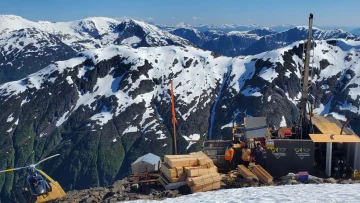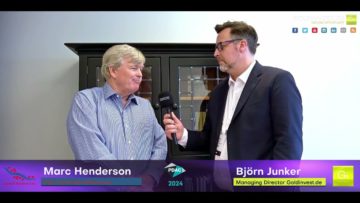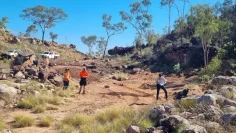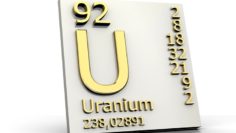Looking for connections between the individual deposits
Laramide Resources (TSX: LAM, FSE: L4RA, WKN: A1H8DW) is currently preparing a new drill campaign at its uranium project Westmoreland in the north-west of the Australian province of Queensland and Murphy in the Northern Territory. The plans envisage drilling a total drill length of 12,000 metres. Work on site is scheduled to begin in around six to eight weeks, when the rainy season comes to an end.
Laramide Resources has secured two drill rigs for the work and the logistical plans for the new campaign are already well advanced. The basis for the new drilling and exploration activities is formed by the 40 successful drill holes over 4,000 metres that were drilled on the two projects last year. They have clearly shown how promising both projects are for uranium exploration.
Within Australia, the Westmoreland project is recognised as one of the world’s best development-stage uranium deposits that is not under the control of a major mining company. The current JORC and NI 43-101 resource model defines 51.9 million pounds of uranium oxide (U3O8) in three deposits: Redtree, Huarabagoo and Junnagunna.
Drilling to expand the resource is the main focus of the program
An internal review of historical data, reinforced by drilling in 2023, has shown that due to the shallow depth of mineralisation, there is the potential to significantly increase the size of the deposit with low effort. Laramide Resources naturally does not want to miss out on this unique opportunity.
Mineral resources are currently defined in three deposits at Westmoreland: Redtree, Huarabagoo and Junnagunna. These zones follow the Redtree Dyke Zone, which is approximately ten kilometres in length, on a northwest trend as discrete ore bodies. The 2016 PEA optimised the pit plans and designated them as South, Central and North Pits.
However, mineralisation in the 2.5km corridor between the deposits, which occurs in the coarse to granular Westmoreland conglomerate and contains higher grades of over 0.1% uranium oxide associated with the fractured footwall contact of the intrusive dolerite veins, has only been drill tested on a small scale to date.
Are there connections between the individual deposits?
Laramide’s aim is therefore to investigate whether the three known deposits can be connected and, if so, whether this could significantly increase the size of the deposit. The company therefore plans to test the connection zone by drilling northern extensions of the high-grade Huarabagoo deposit to the north-east towards Junnagunna.
Laramide is encouraged in this endeavour by a zone of mineralisation that lies midway between the deposits. It was identified during the 2013 drilling programme and returned eleven metres of 0.13% uranium oxide in drill hole WDD12-152. The zone currently remains open to both the north-east and south-west.
Additional resource expansion is being sought through a northern extension of the Junnagunna deposit. It currently has a resource of 11 million pounds of uranium oxide. The northern extensions of the dyke between Junnagunna and the Wanigarango uranium deposit located 1.5 kilometres to the north-east have only been sparsely tested by drilling to date and therefore offer good opportunities for increasing the existing resource.
The Long Pocket deposit is located seven kilometres east of Junnagunna. Here, Laramide’s modelling of the deposit has indicated zones where infill drilling can provide an initial mineral resource estimate. Accordingly, up to 1,000 metres of drilling is planned on this part of the project to ensure that drill spacing is adequate to demonstrate continuity of mineralisation.
Laramide Resources currently anticipates that the addition of Long Pocket, which is shallow and easily accessible, to the Westmoreland resource base will improve the economics of the project or lead to an extended mine life.
Further exploration drilling is planned at the Black Hills, U-Valley and Amphitheatre deposits. Exploration successes over the past two years at these three target zones have also indicated the presence of attractive mineralisation. However, not enough holes have been drilled to date to delineate an initial resource.
Historical work will be resumed and continued at Murphy
In addition, the company also intends to become active again this year on the Murphy project in the Northern Territory. A drill program with a total length of 1,500 metres is planned. The aim is to continue the company’s historic drilling program, which was completed in 2007. In 2006 and 2007, Laramide identified several interesting target zones at Murphy.
These include the Mageera deposit, formerly known as NE Westmoreland. It is currently believed to be a geological analogue of Westmoreland. In 2006-2007, exploration drilling at Mageera returned promising results, including hole NEWM204, which contained four metres of 0.42 per cent uranium oxide. Follow-up drilling with a total length of up to 1,000 metres is therefore planned for this year.
Marc Henderson, President and CEO of Laramide, emphasised at the presentation of the new drill program that the Westmoreland uranium project is already a Tier 1 asset. It is likely to become increasingly important as the world looks for new sources of uranium supply. Although the current resource is already substantial, Laramide Resources sees the potential for significant growth. Queensland is also going through an election this year and recent developments suggest that there could be a change of government, or at least government policy towards uranium. This could give new impetus to uranium mining in this part of Australia – and potentially the companies involved.
Disclaimer: The contents of www.goldinvest.de and all other information platforms used by GOLDINVEST Consulting GmbH are intended solely for the information of readers and do not constitute any kind of call to action. Neither explicitly nor implicitly are they to be understood as an assurance of any price developments. Furthermore, they are in no way a substitute for individual expert investment advice, but rather represent advertising/journalistic texts. Readers who make investment decisions or carry out transactions on the basis of the information provided here do so entirely at their own risk. The acquisition of securities involves high risks that can lead to the total loss of the capital invested. GOLDINVEST Consulting GmbH and its authors expressly exclude any liability for financial losses or the guarantee that the content of the articles offered here is up-to-date, correct, appropriate and complete. Please also note our terms of use.
In accordance with §34 WpHG, we would like to point out that partners, authors and/or employees of GOLDINVEST Consulting GmbH may hold or hold shares in Laramide Resources and therefore a conflict of interest may exist. Furthermore, we cannot rule out the possibility that other market letters, media or research companies may discuss the stocks we cover during the same period. Therefore, there may be a symmetrical generation of information and opinions during this period. Furthermore, a consultancy or other service contract exists between Laramide Resources and GOLDINVEST Consulting GmbH, which constitutes a conflict of interest.


















